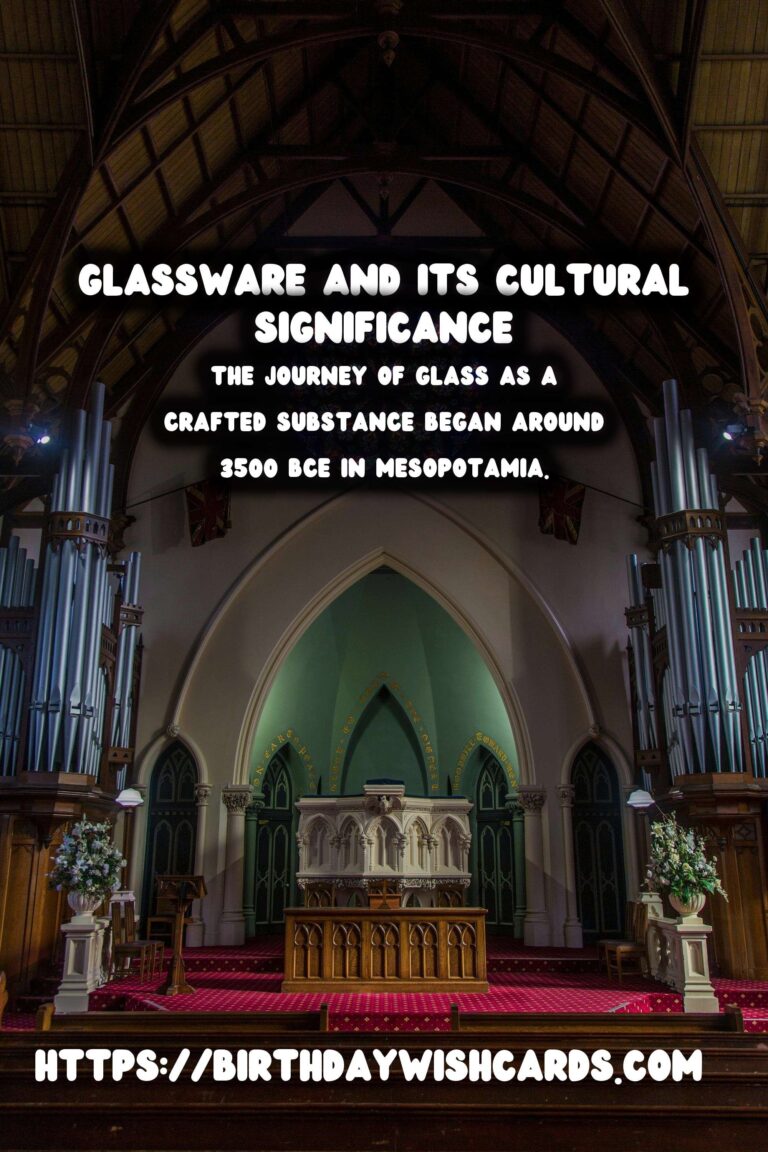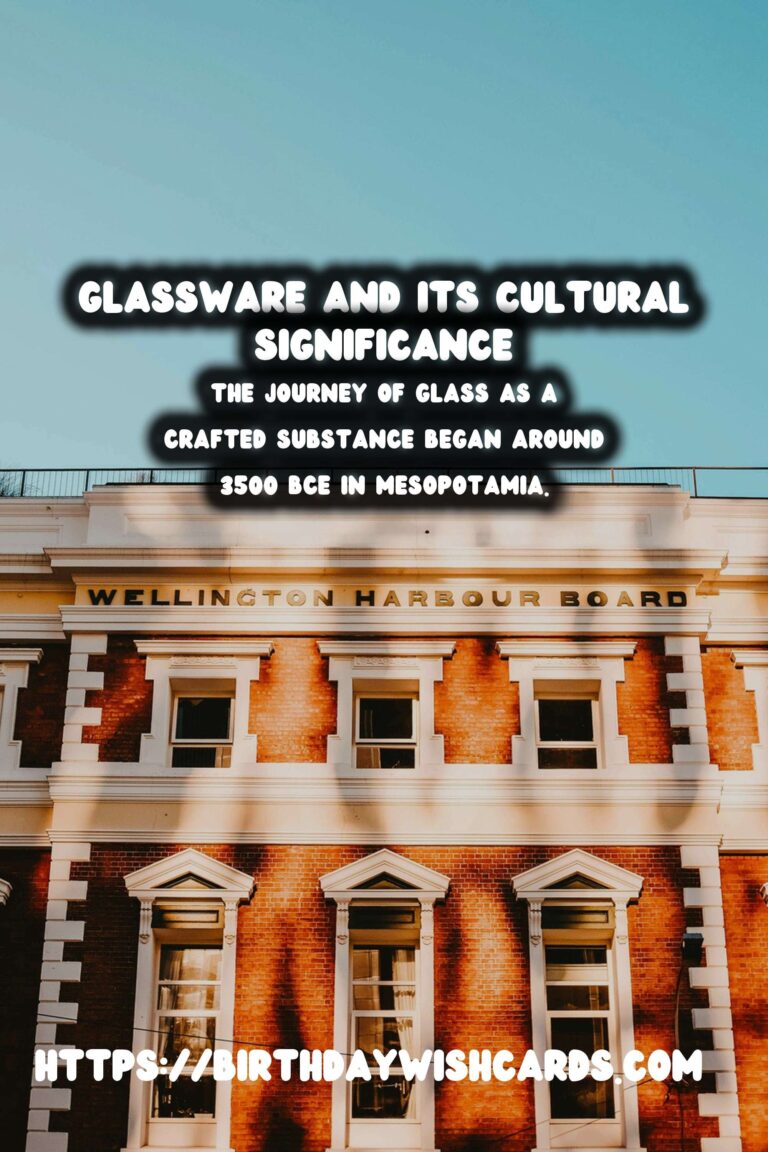
Glassware, while commonplace in today’s households, holds a rich history that spans thousands of years. From the early days of glass-making in ancient Mesopotamia to the elegant crystal goblets of the Renaissance, glass has served not only practical purposes but also as a symbol of wealth and artistry.
Origins of Glassware
The journey of glass as a crafted substance began around 3500 BCE in Mesopotamia. The transition from naturally occurring obsidian to deliberately fashioned glass marked a significant moment in human innovation. Early glass objects were primarily beads, mirroring the prevalent styles of the civilization’s jewelry and decorative arts.
The Egyptians further advanced glass-making techniques, developing methods to create vessels and jars. By 1500 BCE, they had mastered the core-formed method, allowing the creation of hollow vessels. These artifacts were often associated with religious or ceremonial significance, reflecting the mystical allure of glass due to its translucence and beauty.
Spread and Development of Glassware
As trade routes expanded during antiquity, so did access to new techniques and materials. The Phoenicians, famed for their role as ancient traders, spread glass-making knowledge throughout the Mediterranean. Their contributions are significant, as they are credited with inventing the technique of glassblowing around 50 BCE—an innovation that revolutionized glass production and greatly reduced the cost.
Ancient Rome embraced glassware, favoring it for everyday use as well as luxurious pieces. The Romans’ capability to produce large quantities led to an increased presence of glass objects, moving beyond exclusive circles of the elite.
Medieval and Renaissance Glassware
Glassware took on new meanings during the Medieval period. Venice emerged as the epicenter of glassmaking with the establishment of Murano. Venetian artisans pioneered advancements in technology and aesthetics, producing magnificent items that were sought after across Europe.
By the Renaissance, Venetian glassmakers became renowned for their finesse and creativity, leading to the creation of intricate designs that were seen as art pieces. This period highlighted the dual role of glass as a functional commodity and a work of art.
The Role of Glassware in Cultural Practices
Throughout history, glassware has been deeply entwined with social and cultural practices. In 17th-century Europe, glassware signified wealth, as affluent parties showcased their prosperity through elaborate glass creations at banquets and gatherings. The expansion of the middle class during the Industrial Revolution made glassware more accessible, further embedding it into social customs.
With the advent of new techniques and production methods in the 19th century, glassware entered a new era of both functionality and style, mirroring the technological progress of the time. Today, glass remains an integral part of cultural rituals worldwide, from the symbolic breaking of a glass in Jewish weddings to the ceremonial use of glass chalices in religious ceremonies.
Conclusion
The vast history of glassware illustrates not only human ingenuity but also the cultural importance of this material. Beyond practical usage, glass has become a timeless symbol of beauty, status, and tradition.
Glassware, while commonplace in today’s households, holds a rich history that spans thousands of years. The journey of glass as a crafted substance began around 3500 BCE in Mesopotamia. 









#GlassHistory #CulturalSignificance




